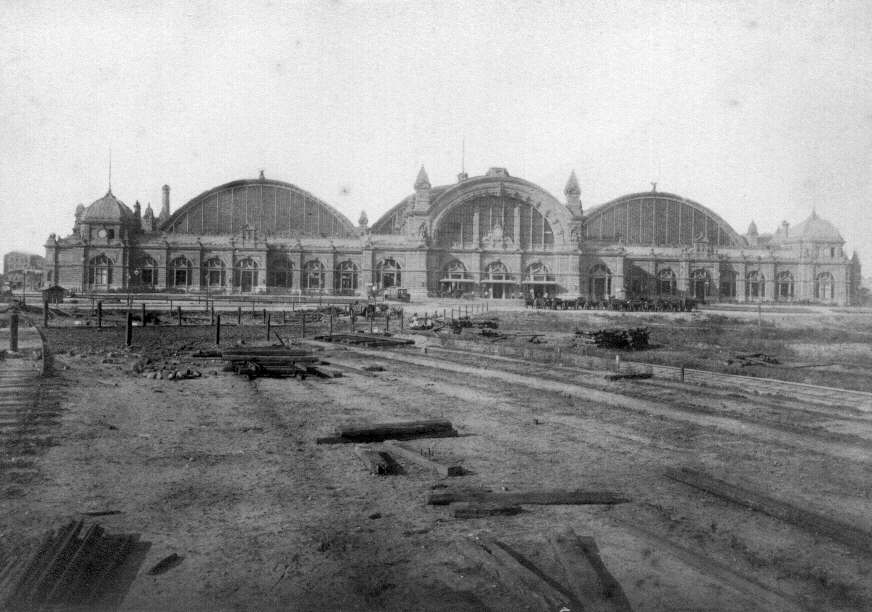TIMERIDE Blog
A train station in the middle of nowhere
Germany is known for being punctual—well, unless you’re talking about Deutsche Bahn (DB). Their delays have become a running joke, even internationally, especially after the European Football Championship in 2024. But if you look back in history, things were very different.
In the 19th century, Germany had one of the best railway networks in the world. The train was the symbol of progress, and the schedule was so reliable you could literally set your watch by it. Train stations were seen as “cathedrals of modernity,” and the biggest of these “cathedrals” opened in Frankfurt am Main in 1888. This massive “Centralbahnhof” set new standards, outshining anything Europe had seen before. But, there was one problem—it was built way out in the middle of nowhere, far from the city gates. What has happened there?
From Jonas Mortsiefer on 12.09.2024

From Gallows and Railways
For centuries, the spot where the station stands today was one of Frankfurt’s execution sites—known as “Gallows Field.” To make it sound nicer, they later called it Gallus. When Frankfurt decided to modernize, a railway area began to develop on the a green field site in 1839. Over the years, a network of tracks emerged, leading to three small stations at Gallusanlage. So far, so good.
Real estate development, 19th-Century Style
With the industrial boom came a fresh breeze of change. There was a scent of opportunity in the air! Entrepreneurs, investors, and speculators smelled money. And just outside old Frankfurt, the cash was literally lying on the street—or rather, on the tracks. The three old stations and their railway yards had to make way for a new city neighbourhood. They wanted to bring a touch of London and Paris to the Main River, with grand hotels, fancy shops, and top-notch entertainment spots. And right in the middle: the monumental new station! At least that’s the plan.
A station in the middle of nowhere
Construction on the station kicked off in 1883. And since they weren’t going small, the colossal building was completed in just five years! It was a structure with incredible presence. The station did create what we’d now call a prime location. Wild speculation drove land prices sky-high in no time. Eventually, prices became so astronomical that no one could afford or wanted to buy land. The result? Instead of a thriving city neighbourhood, there was only barren land between the station and the city. The idea that anything would come of this overhyped wasteland seemed hopeless.
The Emperor steps in
Things only changed when, in 1889, the newly crowned Emperor Wilhelm II welcomed his Italian counterpart, King Umberto I, in Frankfurt. When Umberto left the station and was greeted by the vast emptiness, Wilhelm must have been embarrassed. What kind of image was his beloved country giving off here? Whatever went through the emperor’s mind, soon after, a royal order arrived in Frankfurt. Enough with the speculation! The emperor himself declared that prices be brought back to normal, and construction must begin.
Frankfurt’s Top Address: The Train Station District (!?)
The decree from Berlin worked! Within a few years, buildings started popping up like mushrooms. Finally, around the station and Kaiserstraße, you could stroll along the wide boulevards, enjoying the city atmosphere of the Belle Époque among shops, cafés, restaurants, and hotels. The Frankfurt station district became the city’s top address.
Today, the area has a mixed character—poverty, drug use, and the red-light scene coexist with banks, trendy shops, and a diverse population.
One thing, though, is certain: claiming it’s Frankfurt’s top address nowadays feels about as accurate as setting your watch by the train schedule of the Deutsche Bahn.

Jonas Mortsiefer
Has studied Public History but isn’t particularly good at remembering dates. Instead, he prefers to explore what motivated and influenced people in the past and how that relates to the present. For instance, he’s interested in historical architecture and urban development—because, if you think about it, both are essentially the manifestation of ideas and a built representation of history
